AudioCulture
The noisy library of New Zealand music
Te pātaka korihi o ngā puoro o Aotearoa
The Pleasers
AudioCulture spoke to Roger Skinner, Max Thomson and Kevan Walsh about the birth of The Pleasers, the Auckland venue the Beatle Inn, their rapid rise to TV prominence and their recording career.
When Beatlemania hit New Zealand in 1964, Skinner and Thomson were both looking for new opportunities as their Shadows-style bands faltered.
When 17-year-old Max Thomson purchased a drum kit, his parents decided that “if he was going to have drums he ought to be in a band”.
“They saw an advertisement for a band wanting a drummer and they drove me around, as quickly as they could and I got the job in this band, The Strangers,” recalls Thomson. “In Auckland, there was so much work. There were all the clubs, church hall dances and 21st parties. We worked three nights a week.”
“Our band was coming to an end – two guys were getting engaged and around Christmas 1963, Bryan Layton and I were asked to join this group in a Beatles mode,” said Thomson. “The Shiralee management had seen Bryan and I in The Strangers play the Shiralee and we were introduced to Roger Skinner from The Versatones and this English guy Kevan Walsh, he played bass left-handed like Paul McCartney and he looked the part, so he got the job.”
“A mutual friend in Auckland informed me that some young lads needed a bass player for a start up band,” recalls Walsh. “My bass skills were fairly negligible but I must have looked the part in my new Carnaby Street gear and Beatle haircut. I think the boys were impressed with my Northern England accent and left-handed bass a la Paul McCartney, rather than my playing ability! Roger, however, became my patient musical mentor and guided me through bass playing and adequate back up vocals.”
Walsh’s family immigrated to Auckland in 1957 when he was 13 years old. After three years in New Zealand, Kevan returned to England to pursue a football career as an apprentice with Manchester City, earning £7 a week (his Irish father Billy Walsh had played over 100 games for the same club). After a season, he moved to London for a couple of years. He continued to play part-time professional soccer and started to learn bass guitar but, aged 19, he returned to Auckland due to “injury and disillusionment on the football field”. He joined The Pleasers in the week of his 20th birthday.
Skinner started his first band while attending Selwyn College: skiffle group The Kool Kats. When he left school he started The Top Hats which became The Versatones, a Shadows-style group. Skinner played gigs with The Versatones while The Pleasers learnt their new Liverpool repertoire.
“We practised and practised and once we thought we had enough material, the Shiralee sent us up to Whangarei to play six nights a week for two weeks to get us playing well,” recalls Thomson.
Beatle Inn
When the group returned to Auckland, they did not get the gigs at the Shiralee they were hoping for. When promoter Phil Warren set up the Beatle Inn in Little Queen Street, The Pleasers approached him for work and starting March 1964 they got regular work there, alongside the resident group, The Merseymen (which starred Jett Rink – aka Dylan Taite – on drums). Warren had The Pleasers photographed in Beatle suits and the group adopted the same stage layout as the Beatles, shared microphones etc.
When promoter Phil Warren set-up the Beatle Inn in Little Queen Street, The Pleasers approached him for work.
“At the Beatle Inn, we were doing the same thing as the Beatles did,” recalls Skinner. “I admired George Harrison’s guitar but I could never buy one here, so I got the closest thing I could get, that was the Maton Supreme guitar from Australia.”
Phil Warren’s Prestige Promotions took over the management of the band. Their promotion card read: Directed and managed by Prestige Promotions. “With your own band you decided what you did and what you said no to,” said Thomson. “As soon as you had management, you were just led around. You lost control of everything except the music, even where we lived.”
“During the Beatles era Roger would listen to Sydney radio late at night,” said Thomson. “I remember him taping ‘A Hard Day’s Night’ and we were playing that weeks before it was released.” Roger Skinner’s father had given him a large reel-to-reel tape recorder and jury-rigged the family’s Columbus Radio, so his son could listen to the latest pop music on headphones.
“We started off playing The Beatles, we also did Gerry and the Pacemakers’ hits, The Searchers etc, but we started to move away from the Liverpool sound at the Beatle Inn,” said Thomson. “If we played the Top 20 we’d be on for 20 minutes and give Max Merritt a break. I wouldn’t have my own drum kit. Guys might plug their guitars in the amps that were there or they may have brought their own amps sometimes.”
Although they did not have a record released, the camera-ready Pleasers performed on the Auckland-based nationwide music TV show In The Groove and were asked to return two weeks later. These appearances probably put The Pleasers on the radar of Wellington-based TV producer Kevan Moore.
Ron Dalton signed The Pleasers to Viking Records’ hip subsidiary label Red Rooster. The label’s slogan was “Something to crow about”. Two singles would be issued in 1965: ‘Ain’t Gonna Kiss Ya’ (The Searchers) b/w ‘Move It’ in September and then ‘Yes My Darling’ b/w ‘For Ever’ (written by Roger Skinner). The band’s Auckland recordings were done at Viking studios in Newton Road.
There’s a theory that the Christchurch bands Max Merritt And His Meteors and Ray Columbus and The Invaders showed Auckland how to rock. Thomson agrees with that notion: “Both those bands blew everybody away. At first Ray Columbus and The Invaders were still into the Shadows-thing – Ray doing his Cliff Richard – but they had decent amps and a show. Max Merritt and The Meteors were a real gritty kind of band, very solid and strong. Auckland bands in the resident spots were playing pretty mild stuff. Only The Sundowners with Sonny Day were a gutsier sort of group. Half the time people were fox trotting around the dance floor. The Strangers had to know a fox trot and a waltz but we played Chuck Berry songs too.”
Let’s Go
“Then completely out of the blue,” recalls Thomson, “Phil Warren said to us ‘how would you like to go to Wellington and be resident band on Let’s Go?’ “Something serious must have happened with The Librettos – for a new Auckland group that was not really proven – to be sent down to do Let’s Go. We were given what was quite big money to fix a hole.”
In November 1964 The Pleasers jumped in a van and drove south to film the last six weeks of WNTV1’s Let’s Go. They were paid £25 a week and on a Saturday night they also had to play The Librettos’ former gig at the central city venue Teen-A-Rama. While in Wellington they were managed by Ken Cooper, on behalf of Phil Warren. Cooper’s business partner Ian Dawson took The Librettos to Sydney to seek success.
The Pleasers had started their career with Beatles-style matching jackets but they arrived in Wellington with a slightly different look. “We moved away from the Beatles suits,” said Skinner. “We rebelled! No, we’re not doing that anymore. Then we got into the long hair.”
“The Beatles thing went on for four or five months and then the first Stones came out and we all went WOW!,” recalls Thomson. “Our English bass player Kevan Walsh was from Manchester but his girlfriend was a Londoner and she said The Rolling Stones were ‘the only band’ and pushed them to us. We did the whole first Stones album and the first Kinks album. Our starting song would be ‘Route 66’ or ‘Oh Carol’. And it also took away all that harmony nonsense with The Beatles thing. The Stones influenced our move away from The Beatles. Kevan and I were adamant about the change whereas the singers Roger and Bryan liked harmony – and later on – The Pleasers did The Byrds’ arrangement of ‘Mr Tambourine Man’.”
Other tracks on The Rolling Stones album included covers of rhythm and blues classics: Willie Dixon’s ‘I Just Want To Make Love To You’, Bo Diddley’s ‘Mona’, the Holland-Dozier-Holland penned Marvin Gaye song ‘Can I Get A Witness’ and Rufus Thomas’s signature hit ‘Walking The Dog’. The Pleasers recorded ‘Mona’ for their debut album. In 1965 The Rolling Stones came up with their own compositions ‘Last Time’ (February 1965) and ‘Satisfaction’ (May 65), which were quickly adopted by The Pleasers.
Songs from the Kinks’ 1964 debut album performed by The Pleasers include ‘Beautiful Delilah’, covered on their EP The Pleasers Again, plus ‘Long Tall Shorty’, ‘You Really Got Me’, ‘Bald Headed Woman’, ‘Stop Your Sobbing’ and ‘Got Love If You Want It’.
Things did not go smoothly with the Let’s Go programme “There were so many complaints about us not wearing a uniform and our long hair,” recalls Thomson. “You wouldn’t consider it long hair today. There was all this moaning in the papers and letters to TVNZ [NZBC].”
Let’s Go had a credible rock and roll spirit shared by the early rock and roll shows worldwide.
Therefore, prior to filming the TV show producer Kevan Moore introduced the inspection. “Before we went on, we’d be standing there lined up – things getting set up, all very busy, there’s a countdown to broadcast time,” recalls Thomson. “Kevan Moore would have a phone – ‘Okay, we’ve got this guy here, his hair’s quite long, but it’s quite tidy, he’s got a leather jacket with a polo neck and tidy pants, all pressed’. He’d be explaining this to the head of TVNZ [NZBC], who’d probably be at home having a Saturday afternoon beer. He’d get the okay, that we could go on.”
Kevan Moore’s Let’s Go may not have been as slick as his next production, C’mon, but Let’s Go had a credible rock and roll spirit shared by the early rock and roll shows worldwide. The face of Let’s Go was top pop-radio DJ Peter Sinclair, who transitioned to his new TV role with ease.
In a four-minute Let’s Go behind-the-scenes 8mm film, shot by technician Clyde Cunningham in 1964, he pans between two stages side-by-side that allowed the live-to-air camera crew to move directly from the resident band to the guest band on the adjacent second stage. The film was probably shot in 1964 at the WNTV1’s Waring Taylor Street studio prior to the arrival of The Pleasers as all the bands are wearing matching jackets that are sometimes referred to as “uniforms”.
The small studio was intimate and “There were people dancing around you and between you and where the producers were sitting in their box,” said Thomson. “We probably only did one song or two songs sometimes. They had plenty of guests.”
On a weekday, The Pleasers would pre-record their tracks and sometimes a backing track for a guest artist. On Saturday they set up their gear about 3pm for the 6pm transmission and mimed over the playback.
Songs that Walsh recalls The Pleasers playing on Let’s Go include ‘We Gotta Get Out Of This Place’, ‘Mona’ and ‘Mrs Brown You’ve Got a Lovely Daughter’ – “which I sang using my imitation George Formby accent.”
Thomson enjoyed their time in Wellington. “The resident band at Teen-A-Rama played three or four hours and you’d have four or five 10 minute breaks. We did summer tours like two weeks in Levin. On £25 a week we were living the life of Riley. They arranged mini tours for us to Palmerston North, etc.”
“They got us to do recordings with HMV in Wellington. That was a far better set-up. It was an amazing proper studio. You might have only done three takes to get a finished recording. There was no real care taken and we were too young to have a clue as to whether we could demand anything like ‘the drums should be louder here’.”
The bonus that came with recording at HMV was the band gained access to the record label’s unreleased albums to choose songs for their live repertoire.
“We’d find obscure stuff ourselves,” said Thomson. “HMV were incredibly good, there was all this Motown stuff, an amazing amount of records that they never released. They’d just give us album after album. American copies that they weren’t doing anything with. It was a good source to find good material. Not every song we played was from a hit album like the Stones or the Kinks. We were finding other stuff. By this time you weren’t playing the Top 20 at all. You were playing album-based stuff. We played very little of what I’d call pop then.”
Let’s Go - the album
“This is the most ridiculous thing. We had done all these songs for Viking that were not a bad bunch of stuff. But they were always rushed. Completely out of the blue we got this photo taken after the show with Peter Sinclair and they said, ‘we’re going to do the Let’s Go soundtrack’. The song ‘Let’s Go’ we must have played and they overdubbed it with all this cheering and clapping and nonsense. That was the one track, that they had all the extra work done to it. The next mad thing is that they decide Pete Sinclair is going to sing a song. You wonder about people. It was ridiculous. A song called ‘Lovely Lovely’. All these things we had no control over. They just did these things around you.”
“When we got our royalties for the records, they came in the form of postage stamps. About $10 of postage stamps were sent to us.”
“It was a bone of contention that Peter Sinclair’s name was on the album,” recalls Skinner. Sinclair’s ‘Lovely Lovely’ was issued as a 45rpm single b/w ‘Let’s Go’. The album was released late 1965.
“When we got our royalties for the records,” said Thomson, “they came in the form of postage stamps. About $10 of postage stamps were sent to us.”
Touring can also have high points and low points. Thomson recalls a few:
“We got the front page of the NZ Truth for wrecking a hotel room. What happened was Bryan tried to plug a shaver into a light socket. He tried to take out a light bulb and half the ceiling collapsed and we were branded bad people. Phil Warren phoned and said ‘Warn your mothers, you’re going to be on the NZ Truth cover.’ ”
“I nearly drowned at Napier Beach. I got washed out. When I tried to get back in, I was picked up and taken down the beach. I got washed up on the rocks and got pulled back in. I got to where I had given up, just rolling and one of the guys saw me and I think it was a lifeguard that rescued me.”
A summer season at Taupo went better for the band. One of the musicians coming through to do a guest spot was Howard Morrison and his band. Thomson was asked to do lights and when Morrison did a big and beat-y version of ‘Work Song’ – “breaking up big rocks on the chain gang” – Thomson played the lights like a drummer and Morrison was very impressed.
As a young musician, Thomson found that whether in Taupo or on The Dave Clark Five Tour, you could meet Howard Morrison or Max Merritt in the hotel lounge bar and hang out. “It was like we were one big music family.”
In 1965 The Pleasers remained on Wellington’s Let’s Go and also appeared on Auckland’s Teen Scene.
Dave Clark Five
In June 1965 The Pleasers got a spot on the nationwide Dave Clark Five tour. Lew Pryme opened, then The Pleasers played. They stayed on stage to back Tommy Quickly from Liverpool and then after a break, Ray Columbus and the Invaders performed. After another break and a change of drum kits, the headliners took the stage.
“I remember Ray Columbus doing ‘Yo Yo’,” says Thomson. “Incredibly powerful! I thought, they were as strong as any overseas band at that time.”
Thomson doesn’t think The Invaders blew the headliners off the stage, as is legend: “No, I think something is always saved volume-wise for the top act. We were well-received ourselves.”
“The whole show, was great, it was crazy,” said Skinner who remembers the primal foot pedal used by The Dave Clark Five: “With some of their songs they had that distinctive beat. And they had a piece of wood on the stage, that they would stomp on, and make that special beat on ‘Bits And Pieces’.”
Walsh recalls that Dave Clark said in a TV interview that he liked The Pleasers. “I think he said this because we acted as roadies, helping shift all the Dave Clark Five gear from one place to another, although I hope that it was in fact for our talent.”
The 1965 Dave Clark Five tour started at the Auckland Town Hall (7 June) and then played: Seddon Park, Hamilton (8 June); Regent Theatre, Palmerston North (9 June); Majestic Theatre, Christchurch (10, 11 June); Dunedin Town Hall (12 June) and Wellington Town Hall (13 June).
Skinner spoke about the Dave Clark Five tour with Wellington “That’s Show Business” columnist Barry Duncan: “Auckland was the best audience, Dunedin was the biggest and wildest. There were 3,000 people there. Hundreds rushed the stage and only three policemen were there to stop them.”
At the time Skinner hoped there would be more international tours. “We’ve got our fingers crossed, as our management, Prestige Promotions, are negotiating to get us on two more tours with overseas artists this year.”
Duncan noted, “The Pleasers are earning good money and, like every good business should, they’ve ploughed it back into equipment. They have just spent £1,000 on new drums, guitars and amplifiers.”
At the time of this late 1965 story, their gear line-up was lead guitarist Roger Skinner on a Gibson ES355 TD, Kevan Walsh on a Hofner violin bass, rhythm guitarist Bryan Layton on a Gibson 12-string guitar and Max Thomson on Ludwig drums.
The Sunday News (26 September 1965) noted that the band were leaving Wellington to return to Auckland to replace the Merseymen at the Beatle Inn. In 1965 The Pleasers also appeared on the Auckland TV show Teen Scene. The Levin music zine Pop Scene (September 1965) wrote: “Teen Scene spent too much time on such things as fashions, instead of the artists, in particular, The Pleasers. Some nights you never set eyes on them.”
Skinner recalls Phil Warren’s corny promotion The Battle Of The Pleasers at the Oriental Ballroom. “The Aussie Pleazers and us did a set each and at the end of that, the compere, Ralph Cohen, said those who want the NZ Pleasers on this side, and Aussie Pleazers on that side. Everyone was rushing backwards and forwards. You couldn’t tell, so nobody won.” Thomson and Walsh recall The Pleazers doing “a scorching version of Van Morrison’s ‘Gloria’.”
Thomson didn’t choose to leave the band. “I didn’t have very much choice – the band disintegrated around me.” Aged 20, he did not want to be in another band. “I knew I wasn’t a great drummer. I knew what great drummers were, because we’d play with them every now and again. I could put out a solid beat but Jimmy Hill [Ray Columbus and The Invaders, Max Merritt and The Meteors] was five times the drummer that I was.”
Thomson recalls playing a gig in Sandringham with his first band The Strangers. “Frank Gibson Jr was there and his friends yelled, ‘Frank, give us a drum solo’ … and he got up and just let rip on the drums. My god, I wanted to crawl out the back door and not come back.”
Max Thomson moved into commercial photography and became a successful Auckland fashion photographer (including doing work for Playdate magazine) and as a director of TV advertisements for fashion clients. Kevan Walsh moved to Australia and became a physical education teacher. Bryan Layton got involved in the business of hair.
“I left New Zealand two years after the band folded, at the age of 24,” said Walsh, “and returned to my first love, soccer. I played state league in Melbourne and found a temporary physical education teaching position. After completing a Bachelor of Applied Science degree, Walsh taught PE until 2006. He then moved to Noosa Queensland and played in a Sunshine Coast band called Baktrak who played 1980s tunes, until he retired in 2014, aged 70.
Walsh’s favourite Pleasers recording is their first single, ‘Ain’t Gonna Kiss Ya’. Thomson prefers the HMV Wellington recordings with their impressive takes on the Kinks’ ‘Beautiful Delilah’ and the Velvelettes’ Motown standard ‘Needle In A Haystack’, released on an original 1965 vinyl EP, The Pleasers Again.
Music writer Ken Williams recalls, “they had a nice reworking of Cliff Richard’s ‘Move It’, and while writer Andrew Schmidt praises New Zealand beat bands such as The Pleasers for “chasing that obscure album track, flipside or middling overseas hit to make their own” he notes “it was hard to find a weaker version of ‘Mona’ than the one recorded by The Pleasers.”
A best of The Pleasers album has never been released but in 1999 English label Rock-In-Beat Records issued Two Great Beat LPs on One CD, a package of Max Merritt’s Meteors’ 1965 RCA album and The Pleasers’ Let’s Go album. The Pleasers were in very good company on this reissue.
Mid-1966, Roger Skinner joined The Keil Isles who were resident at the Oriental Ballroom and led by singer Herma Keil. They were invited to become the resident band for Kevan Moore’s new Auckland-based weekly music show C’mon. They first recorded the November 1966 pilot show and they then signed on for a 26 episode series starting in February 1967. Moore had a young super-group with Brian Henderson (22) on organ, Billy Karaitiana (23) on bass, Jimmy Hill (23) on drums and Roger Skinner (24) on lead guitar.
After having a very successful year in 1967 with the C’mon TV show and tour – Roger Skinner won the APRA Silver Scroll award for the now classic song that he wrote for Larry’s Rebels, ‘Let’s Think Of Something’. Skinner has never retired from playing music and currently plays in two Auckland bands, the three-piece Roger and The Ramjets with Chris Parfitt (Hi-Revving Tongues) and the four-piece Roger Skinner and the Motivation.
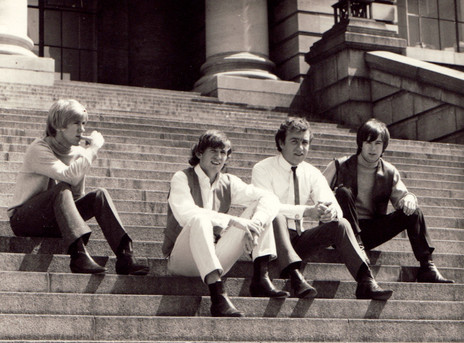
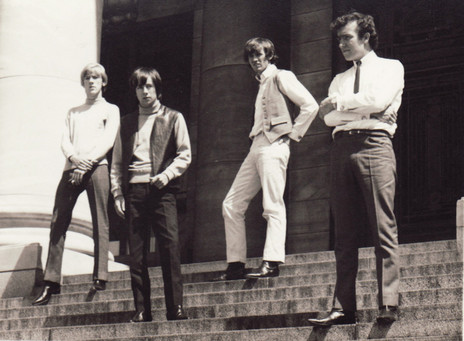
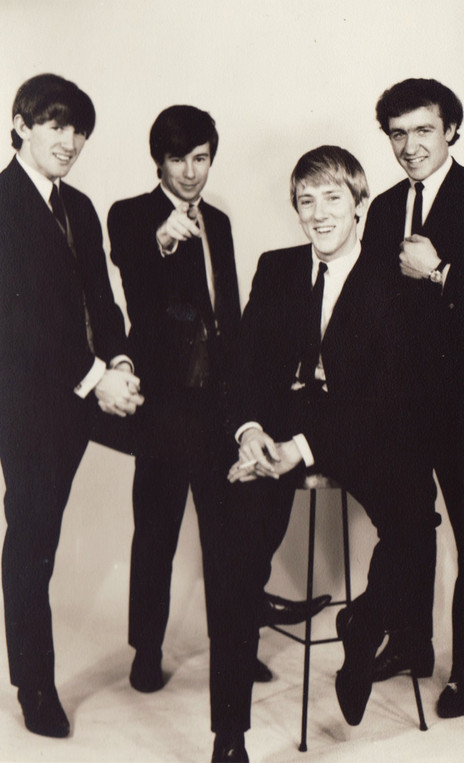
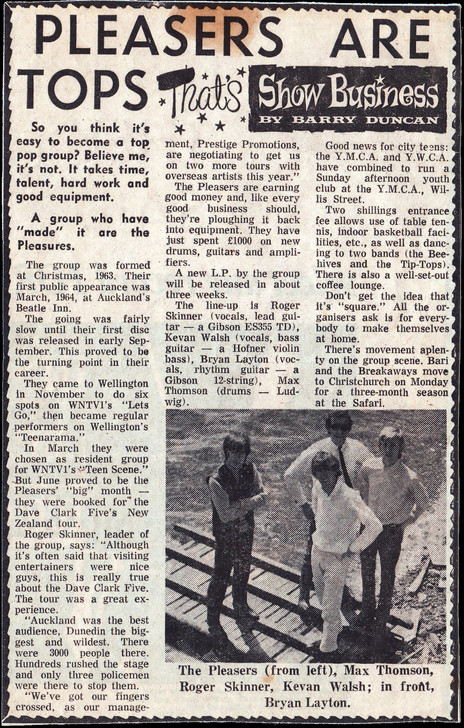
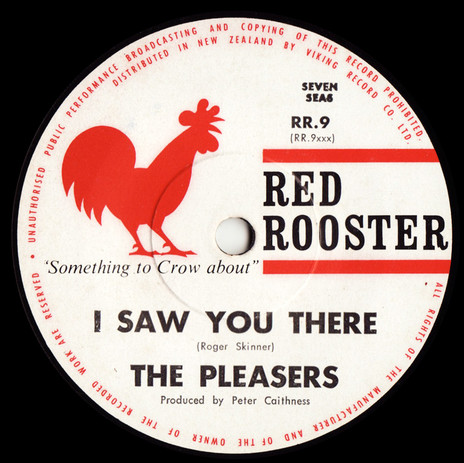
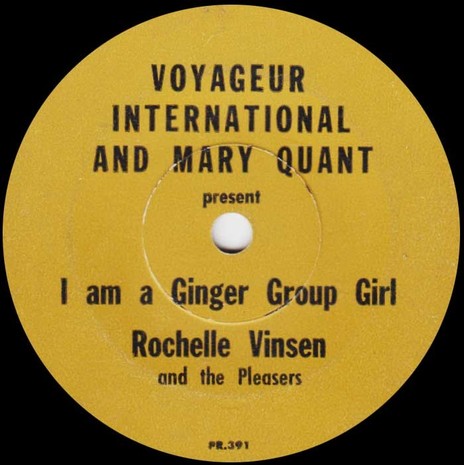
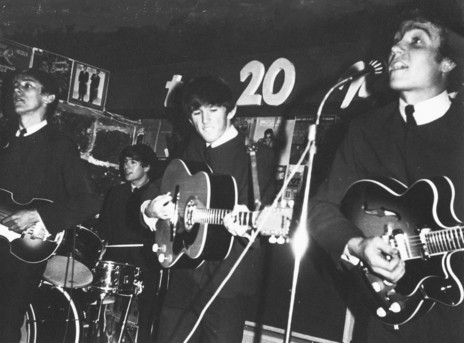
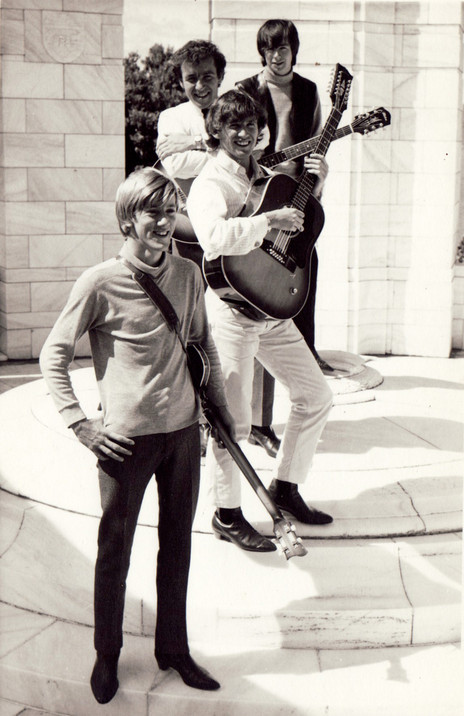
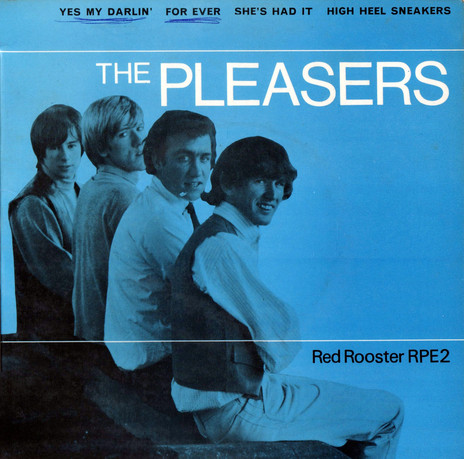
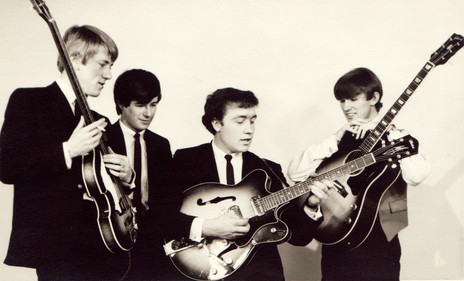
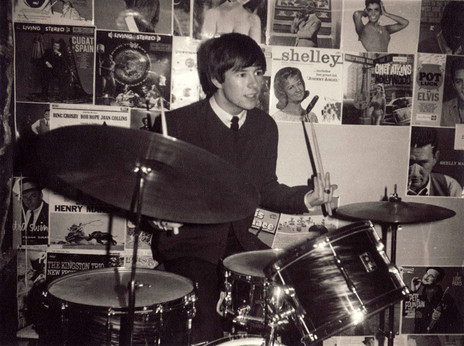
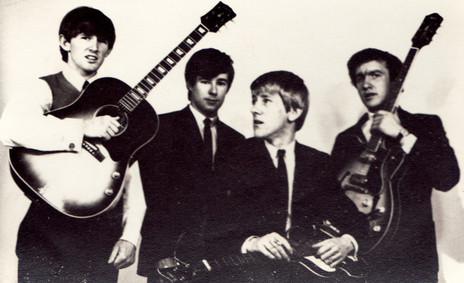
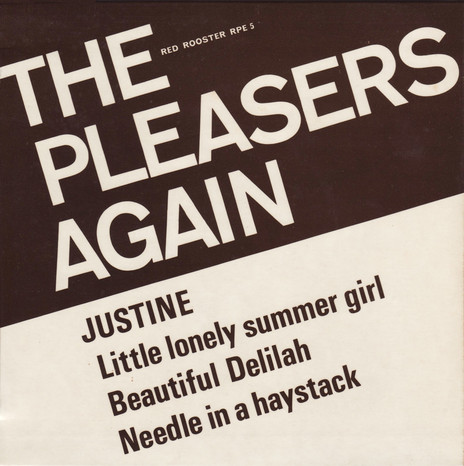
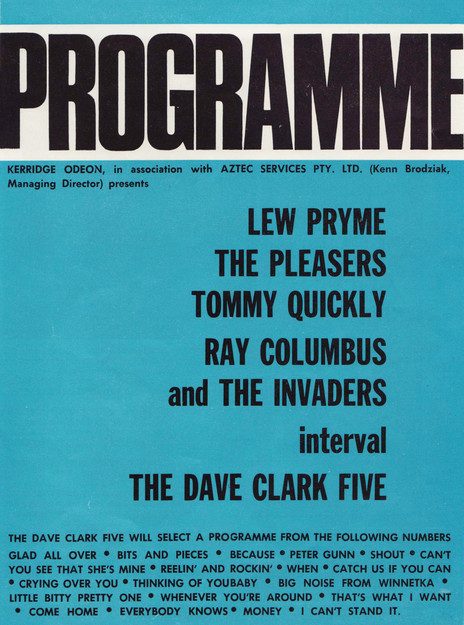
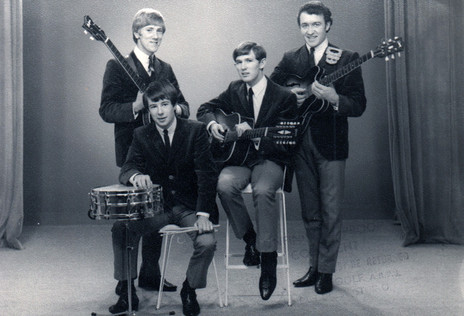
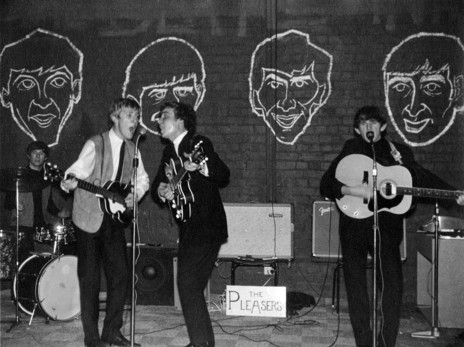
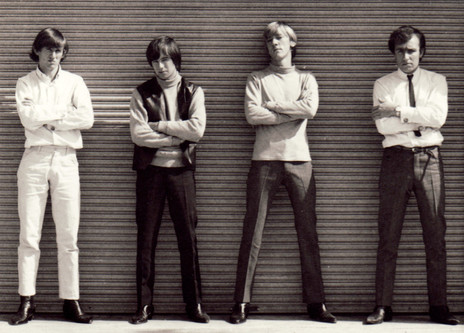
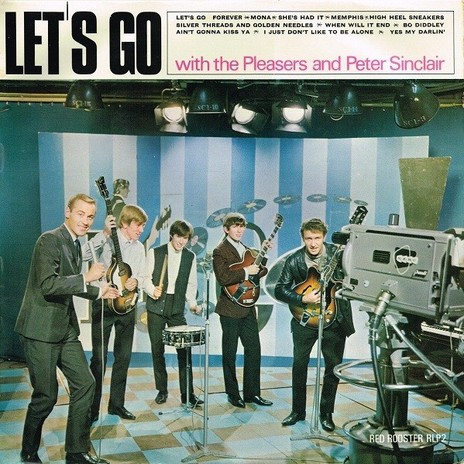
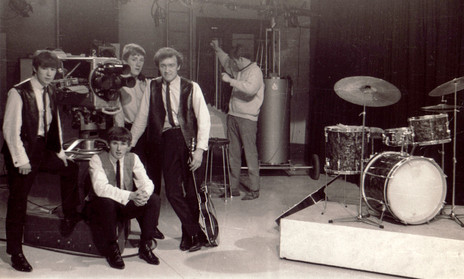
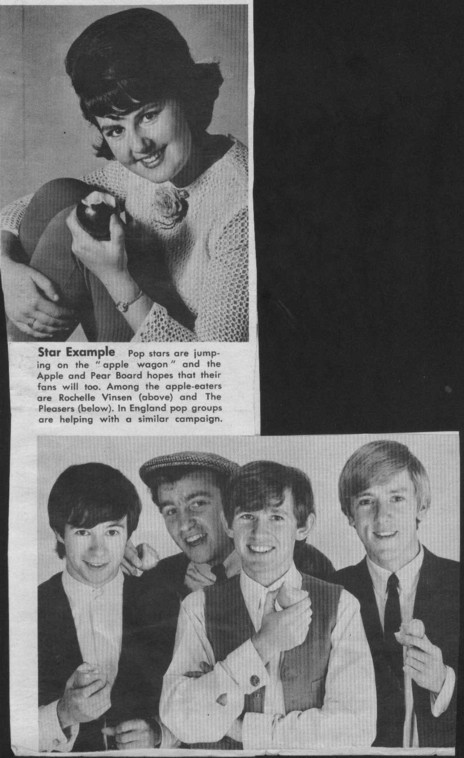
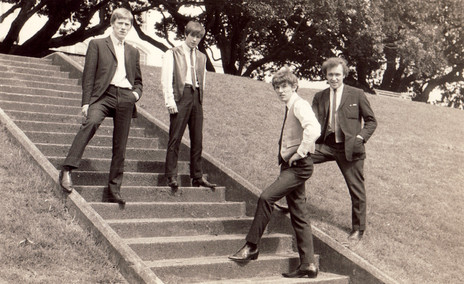
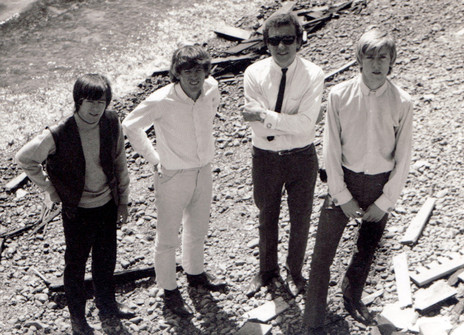
Roger Skinner - vocals, guitar
Kevan Walsh - vocals, bass
Max Thomson - vocals, drums
Bryan Lawton - vocals, guitar
Red Rooster
Visit our sister site
NZ On ScreenMade with funding from
NZ On Air